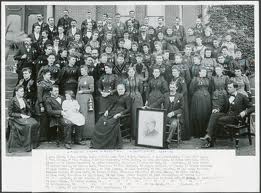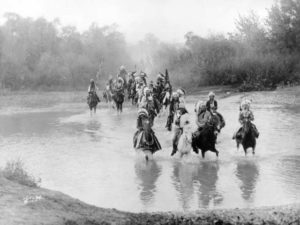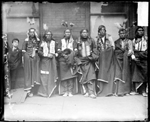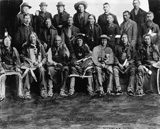Canton, South Dakota was an extremely small town of around 100 people in the 1870s, when it consisted mainly of vacant lots. By 1880, more than 600 people lived there; the city was incorporated a year later and began to build in earnest. Residents were affected by the weather just as isolated settlers were, losing their crops to grasshopper infestations and enduring bitter cold and arid droughts. Continue reading
Tag Archives: SD
Insane Asylum Oversight
Just as in other workplaces, insane asylums had personnel problems that administrators had to deal with. Though some superintendents tried hard to find the best attendants possible, they had to ultimately accept the kinds of employees available in the marketplace. In 1895,the superintendent at Kentucky’s Eastern Lunatic Asylum mentioned that he had been able to employ “four bright young men from the State College.” Other institutions, and probably Eastern Asylum as well, had to sometimes accept attendants who were just a step above criminals. With its demanding schedule and lack of freedom, a job as an asylum attendant was not likely to appeal to anyone who could find something better.
Both Gifford and Hummer, while superintendents at the Canton Asylum for Insane Indians, ran into the same personnel problems as other superintendents. The work they offered was demanding and difficult, and didn’t pay well. They faced an additional problem with the size of their labor pool. Canton was not large, and even though the city of Sioux Falls was not far away, it was too far away to expect many people there to find work at the Canton asylum desirable. Attendants were required to live on the premises, which also made the work less attractive to non-Canton residents.

Attendants at Pennsylvania Hospital for the Insane, circa 1860s, courtesy University of Pennsylvania
______________________________________________________________________________________
Clashes Between Indians and Whites
Dakota Territory, where the city of Canton was eventually established, embraced the Mandan, Arikara, Kidatsa, Assiniboin, Crow, Cheyenne, Cree, and Dakota (Santee Sioux) tribes. The Lakota Sioux were openly hostile to white newcomers, and even the early trappers avoided their sacred land in the Black Hills. Things changed when pioneer families came in and railroads began to snake through the countryside. Railroad workers arrived in hordes to cut through previously untouched land. People who had heard rumors about gold sometimes sneaked into the Black Hills.
The Lakota Nations were important to peace in the region, and in the Fort Laramie Treaty of 1868, the U.S. government granted them a huge parcel of land west of the Missouri River. The government forbade settlers or miners to enter the Black Hills without permission, and the Sioux agreed to stop fighting with the newcomers.
Some people inevitably broke the treaty, and inevitably there were clashes. One Sioux retaliation tactic was to raid settlements and then retreat to the Black Hills where they were protected from pursuit by their treaty. The military wanted a fort in the area to better their chances of cutting off the Sioux before they could get to the Black Hills. That desire for a fort changed everything.
My next post will discuss what happened when the government pursued building a fort in the area.
________________________________________________________________________
Canton, SD Sports
Citizens of the small town of Canton, SD found plenty of ways to amuse, educate, and uplift themselves. Their baseball team, the Sunflowers, enjoyed a rousing game of ball and both hosted and visited nearby opposing teams.
On a fine Saturday in May of 1904, the Sunflowers played a team from Rock Valley and beat them soundly: 23 to 1. A reporter’s derisive comment was that “if they should want another game with Canton they had better play the Canton Juniors.”
Canton’s team played a game the following Tuesday with Flandreau Indian school’s students. Flandreau began the game. The pitcher began well; however, errors in the infield allowed four quick scoring runs. Canton made its own share of errors (6 to Flandreau’s 9), but won the game at 10 to 7. The paper noted that the Flandreau boys were “a splendid lot” who showed good sportsmanship.
Rain washed out that week’s Wednesday game, which was postponed until Thursday. Another regular game was scheduled for that Friday with the Flandreau school, which took place too late for the outcome to get into press.
________________________________________________________________________








